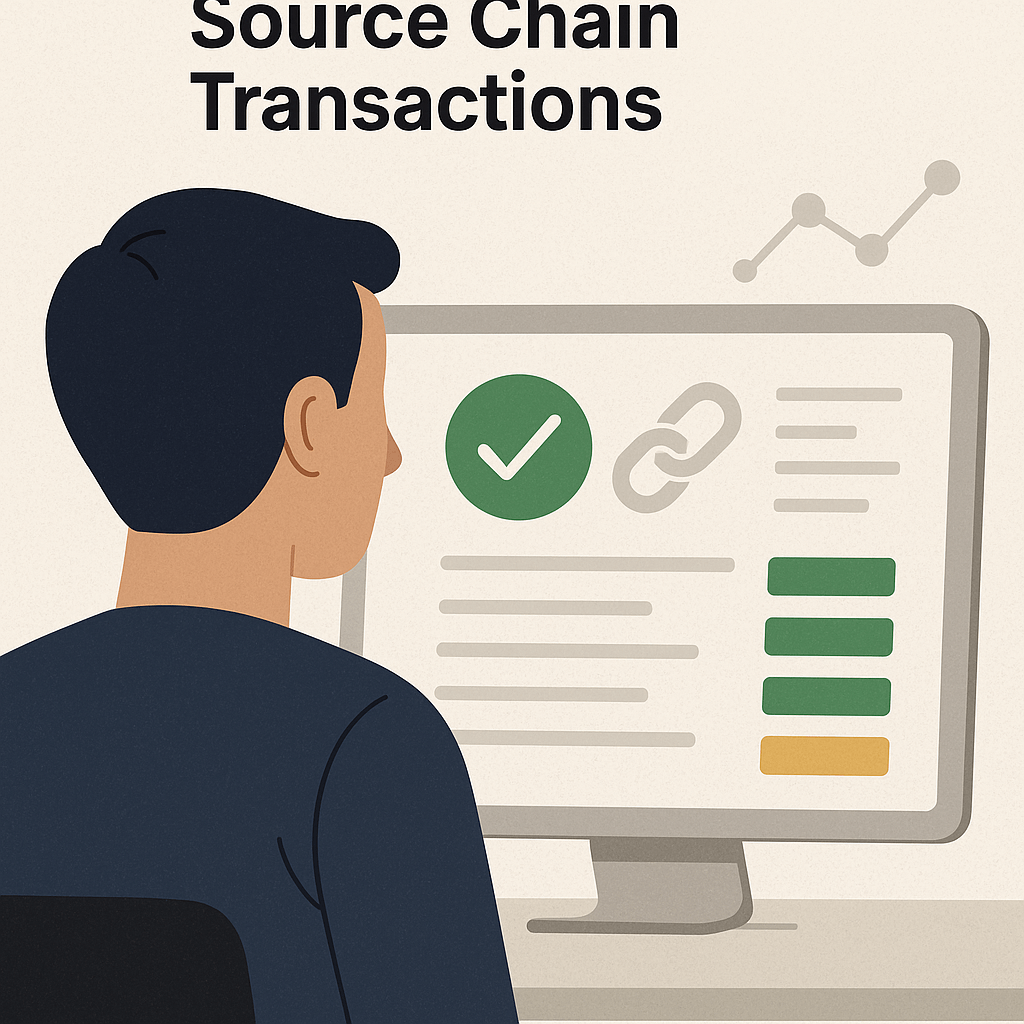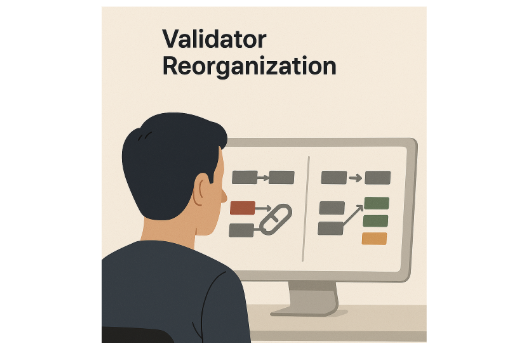In this article, I will discuss the Ways To Monitor Bridging Transaction Finality since they facilitate investment in a diversified collection of crypto assets.
These tokens give exposure to certain sectors such as DeFi, NFTs, and the metaverse, thus providing easier asset access with less management risk.
Key Point & Ways To Monitor Bridging Transaction Finality
| Key Point | Description |
|---|---|
| Check Source Chain Transaction Status | Confirm the transaction hash and confirmations on the source chain explorer. |
| Verify Bridge Smart Contract Events | Review emitted events from bridge contracts indicating transaction processing. |
| Track Relayer or Validator Confirmations | Ensure relayers/validators have acknowledged and forwarded the transaction. |
| Monitor Destination Chain Transaction | Check the status and inclusion of the transaction on the destination chain. |
| Query Bridge API for Status | Use the bridge’s API to track transaction state and message delivery. |
| Use Cross-Chain Messaging Protocols | Monitor protocols like LayerZero or Axelar for message confirmation. |
| Check for Reorg Protection | Verify that the transaction is finalized beyond the reorg threshold. |
| Monitor Bridge Operator Logs | Analyze logs for bridge relayers or operators for processing updates. |
| Validate Asset Balance on Destination Chain | Ensure that the bridged asset appears in the destination wallet or contract. |
| Set Up Custom Alerts for Finality | Use tools or scripts to alert you when finality is reached on both chains. |
1. Review the Status of Source Chain Transactions
Bridging transaction finality requires monitoring the source chain and verifying the transaction status. This means checking that the transaction has been incorporated into a block and has sufficient confirmations to be deemed secure.

On Ethereum, for instance, it is customary for a transaction to be confirmed at least 12-30 times before it can be considered irrevocable during chain reorganization periods. Users can monitor the transaction’s status by entering the transaction hash on blockchain explorers such as Etherscan, BscScan, or PolygonScan.
Moreover, Web3.js and ethers.js are capable of programmatically interacting with the blockchain to retrieve confirmation counts. This level of assurance regarding the source chain allows you to strengthen your confidence that the bridging process commenced correctly.
Status of Source Chain Transactions Features
- Real-time tracking of transactions is available through various blockchain explorers like Etherscan.
- Displays confirmation count which aids in ensuring safety(e.g. 12–30 confirmations for Ethereum).
- Provides verification details including transaction hash, block number, and timestamp.
- Allows web-based interaction for automated supervision through APIs and Web3.js.
- Highlights the status of a transaction (pending, confirmed, failed) for assessment.
2. Check Bridge Smart Contract Events
The bridge smart contracts give off specific events like Transfer Initiated, Deposit, or Locked Events, that mark relevant steps in bridging which are executed when a specific transaction is started or executed. It is necessary to track these events in order to check if the bridge has recorded the transaction for cross chain execution.
Events can be filtered by contract address on blockchain explorers or they can be listened to in real-time through libraries like Web3.js or ethers.js. For example, Wormhole bridge emits events for asset locking on the source chain which can be checked through contract logs.
These enable the user to set up their own scripts with a particular goal of monitoring events and reinforcing confirmation that the bridge smart contracts processed the transaction that is crucial to achieving finality.
Check Bridge Smart Contract Events Features
- Detects specific events like TransferInitiated or Locked that are emitted by bridge contracts.
- Provides integration with Web3.js or ethers.js for real-time event logging.
- Offers detailed event data (e.g., sender, amount, destination chain).
- Integrates with blockchain explorers for viewing events manually.
- Supports filtering by address which allows monitoring by contracts.
3. Monitoring Validator Confirmation for Cross-chain Transactions
Relayers or validators are often used in bridges to enable cross-chain transfer by forwarding messages or transactions signals between chains. They help guarantee that every confirmation is indeed processed.

For example, Wormhole and Axelar bridges utilize a constellation of validators who sign and verify the cross-chain messages. Validator progress can be monitored through the bridge’s official dashboard, API, or even by directly querying the validator nodes.
Some bridges offer public APIs to check the status of relayed transactions while indicating if the necessary signatures from the validators have been collected. this confirms that the bridge has off-chain or consensus mechanisms that are attempting to finalize the transaction on the destination chain.
Monitoring Validator Confirmation for Cross-chain Transactions Features
- Monitors cross-clain message validation through relayer or validator signatures.
- Offers the use of a dashboard or API for viewing confirmation progress.
- Shows the required signatures with the current acquired ones.
- Ensures validation consensus between validators (Wormhole,Axelar)
- Notify the user of delays or problems in the relaying process.
4. Chain Transaction of the Destination Monitor
To check whether the assets in question have indeed been minted, unlocked, or transferred, it is critical to double check that the bridged transactions are monitored properly. This is done by checking the various blockchain explorers, BscScan for example for the BNB Chain or Snowtrace for Avalanche, to ensure that the transactions have been batched.
After bridges like Synapse do a transaction, they are able to check the destination chain for Transfer Completed or Mint Events and other such activities.
For monitoring programmatically, the destination chain’s smart contract or wallet address can be interrogated for transaction changes.
You must confirm the finality of the transaction on the destination chain for the bridging process ensures it is fully done and the assets can be utilized.
Chain Transaction of the Destination Monitor Features
- Uses explorers like BscScan to check and confirm the transaction on the destination chain.
- Verifies asset minting and unlocking activities (e.g. TransferCompleted).
- Displays details such as the block height and transaction recipient address.
- Permits checking the balance of a contract or wallet automatically.
- Checks, on the destination chain, if there are enough confirmations to claim finality of the transaction.
5. Status from Bridges APIs
Tracking the status of cross-chain transaction on given bridges is very simple since a good number of them have APIs dedicated to that. Bridges such as Multichain, Synapse, or Polygon PoS Bridge are a great example as they provide APIs that allow users to get the status of a transaction using a hash or any other identifier.

The API can tell whether the transaction is pending, in progress, or completely finished. It is possible to build a script to check for status updates, which can allow the entire bridging process to be tracked in real time.
This API is ideal for applications and dashboards to integrate bridging status checks and ensure that they receive real-time updates on transaction finality.
Status from Bridges APIs Features
- Multichain or Synpas associates their respective APIs which means there is real time (Bridge-Specific API) offers).
- Supports either polling or webhook notifications for automation purpose).
- Provides State of transaction – pending, in progress, completed, etc.
- Details metadata like transaction hash and timestamp are also returned.
- Integrations with custom applications is possible for seamless monitoring.
6. Apply Cross-Chain Messaging Protocols
Bridges using cross-chain messaging LayerZero, Axelar, or Chainlink CCIP rely on sophisticated communication systems to manage data flow between chains. These chains are monitored for the execution of cross-chain messaging to validate its receipt and processing.
For instance, LayerZero has SDKs and APIs for message status surveillance. Axelar has a dashboard designated for message routing monitoring.
These tools assure that the initiating message for the asset transfer has crossed to the destination chain and has executed the required steps.
This is particularly effective for bridges that “decouple” messaging from the asset transfer, as they cleanly show the transaction’s progress toward finality.
Apply Cross-Chain Messaging Protocols Features
- Enable tracking of the messages delivery between chains using like Layer Zero or Axelar.
- Decentralization ensures security of bundled messages and compartmented chains.
- End-to-end ensures message integrity and security which supports multi-chain compatibility for complex bridges.
- Provides sdks and apis for checks for debugging.
- Visualizations captures message routing and delivery confirmation.
7. Check for Reorg Protection
An opposing chain must not seem to change their past work in a way that we have not already taken account of, during bridging, we must ensure the source chain transaction attempting validation in its bridging holds true.
A blockchain reorganization is when a certain block is skipped in exchange with a block that exists on a longer chain. To check this, you need to make sure the source chain transaction has enough confirmations to satisfy the acceptance criteria.

Each blockchain has their own number of confirmations required for the reorg protection, e.g. Bitcoin has 7, Avalanche 64. Confirmation counts can be fetched via a blockchain explorer, node query, as well as using Web3.js which can confirm these checks automatically.
Putting in place reorg protection assures us that the transaction is stable on the source chain which reduces the probability of encountering failures while bridging due to unstable chains.
Check for Reorg Protection Features
- Chain rearrangement is monitored upon confirmation depths to ensure no reorders.
- Specific threshold chains such as Avalanche use 64 while Bitcoin uses 7.
- Confirmation count is provided by explorers queries via nodes.
- Insufficient confirmations urging added security provides alerts.
- Bridging advances ensuring the transaction stability is guaranteed.
8. Oversee Bridge Operator Logs
For centralized or semi-centralized bridges like Binance Bridge or some custodial bridges, operators have logs or interfaces where they record their actions related to both processing and transactions.
Checking these logs includes going to the official website of the bridge, API, or any other support system used to check the transaction status. For instance, a contractor might provide a dashboard indicating whether a transaction has been processed, relayed, or finalized.
In certain instances, bridges provide notifications about transactions through email or API. This is most pertinent to the bridges with off-chain parts since it offers clarity as to what the operator does to effectuate the finality of a transaction.
Oversee Bridge Operator Logs Features
- Transactional logs dashboard access show stages of transaction processes alongside the timestamps
- Operator actions include manual approval where actions like relaying comes forth.
- Semi-centralized offers transparency in bridge operations
- Validate Asset Balance on Destination Chain\
- Confirms asset consignment is on the contract or the wallet of the respective shipper.
- Account balance exploration or interface capture displays the changes under the tokens functions.
9. Double Check Asset Balance On The Final Chain
Confirming that the asset balance on the chain is confirming that the bridging transaction is complete is the final step you undertake in validating whether the bridging transaction has reached a state of finality.

You check the smart contract or wallet address of the recipient on the corresponding chain. For instance, when bridging ERC-20 tokens from Ethereum to Polygon, you verify whether the recipient’s Polygon wallet is credited with the tokens.
Automated checks using Web3.js or ethers.js can be used to call the balance from the token contract. By ensuring these set conditions, you confirm that the process of bridging assets has been completed.
Double Check Asset Balance On The Final Chain Features
- Confirms the asset has been received on the user wallet or an appropriate contract.
- Shows balance through other wallet interfaces or explorer which provides certain APIs.
- Supports balance checks for specific tokens as ERC-20 checking on Polygon.
- Checks for finality on the transaction through balance increment.
- Allows checking through Web3.js and ethers.js programmatically.
10. Create Personalized Alerts for Transaction Finality
Custom alerts for transaction finality can assist in monitoring the bridging process. You can set alerts on certain smart contract procedures like TransferCompleted or Mint or even on block confirmations on both chains using Tenderly, Blocknative, or The Graph.
As an example, with Tenderly, you can set alerts for when a bridge’s destination chain contract emits a finality event. Also, custom scripts can be developed with Web3.js or API crawling that can send alerts through email, SMS, or Discord.
This ensures that updates regarding bridging issues and finality are received in real time for timely responses to resolve issues.
Create Personalized Alerts for Transaction Finality Features
- Sets real time alerts using Tenderly or Blocknative for receiving critical add-ons.
- Sets alerts for different actions like TransferCompleted.
- Allows sending alerts through multiple channels like SMS, Discord, Email etc.
- Allows setting up base which confirmation so customize barriers close by praise.
- Improves speed of response to nonexecuntion or transaction fail.
Conclusion
Monitoring bridging transaction finality is essential to ensure asset security and consistency across chains.
By tracking transaction status through APIs provided by bridges like Multichain or Synapse, verifying validator confirmations, checking asset balances on the destination chain, and ensuring sufficient source chain confirmations
Users can confidently validate cross-chain transactions and mitigate the risks of blockchain reorganizations or incomplete transfers.










